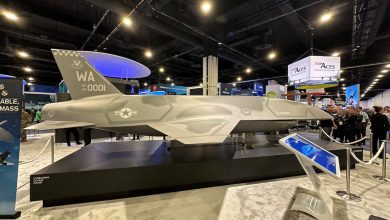US Space Force sorts through industry ideas to boost satellite sensors

The U.S. Space Force is working with industry to understand what capabilities can help expand the service’s portfolio of space domain awareness satellites, amid a growing demand for sensors in geosynchronous orbit.
The service operates a fleet of satellites under its Geosynchronous Space Situational Awareness Program. They are about 22,000 miles above Earth and essentially serve in a neighborhood watch function. They also perform rendezvous and proximity operations, drawing close to other satellites to observe and provide data on them.
In March, Space Systems Command asked companies for ideas on how to augment that constellation with smaller, maneuverable spacecraft equipped with different sensors that can be refueled in orbit.
Col. Bryon McClain, the command’s program executive officer for space domain awareness and combat power, said June 5 his office is sorting through the influx of ideas from companies to determine how they might shape future Space Force requirements.
“The team is looking at that, and we’re fundamentally looking at how does that change our future architecture,” he said during the C4ISRNET Conference, held June 5. “How can we take that information, working with our warfighter and the requirements team, to understand the specifics of what we need?”
It will take time for the service to transition to a new satellite architecture, McClain said, adding that he doesn’t expect the shift to the more advanced capabilities to happen until around 2026 or 2027. That’s due largely to budget constraints as well as the demands of the existing mission.
“We have an ongoing mission set for on-orbit space domain awareness, and we need to make sure that’s covered,” he said.
McClain didn’t share specifics on the types of capabilities the service might adopt, but did say the changes are aligned with a push from senior Space Force leaders to build smaller systems that rely on less “exquisite,” military-unique technology and more on commercially available capabilities.
“Those two ideas, those mentalities, really go hand in hand, and we’ve tried to embody that,” he said.
The Space Force has been leveraging commercial space domain awareness capabilities through several initiatives, including its Joint Commercial Operations cell in Colorado Springs. McClain said the next step for the service is to better understand the dynamics of the private sector markets.
As an example, McClain noted that demand for small satellites has fueled significant growth in the commercial spacecraft bus market. The service needs to understand the capabilities of those buses so that it can tap into that existing pool rather than design military-unique requirements; otherwise, it will miss out.
“Now, the push that I have when I’m working with industry, and the request that I always have, is please make sure that I’m not packing in unique requirement sets in [requests for information] or [requests for proposals] that force you to deviate from that commercially available product to start going toward a military-unique product.”
Courtney Albon is C4ISRNET’s space and emerging technology reporter. She has covered the U.S. military since 2012, with a focus on the Air Force and Space Force. She has reported on some of the Defense Department’s most significant acquisition, budget and policy challenges.







